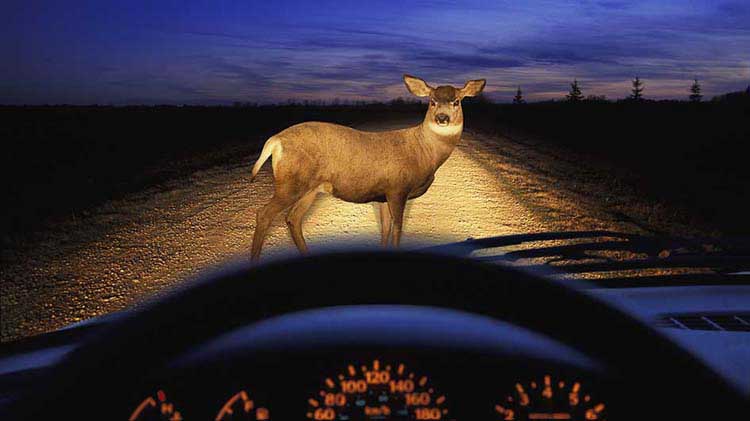
Vehicle Collisions and Wildlife – Suing the Driver of your Own Vehicle
In Alberta, and indeed across Canada, drivers are sometimes faced with the situation of a wild animal on the roadway. Accidents can ensue, sometimes with disastrous consequences. When an accident involving just one vehicle occurs due to the presence of a wild animal, the driver has typically no one to sue. The driver would be entitled to rely on their own accident benefits under their insurance policy to pay for such things as medical treatment or possibly time off of work, but the driver would not get compensation for such things as pain and suffering. There is usually no one to blame in those circumstances.
Passengers are in a different position, literally and legally. A passenger that is injured in an accident involving one vehicle and a wild animal is entitled to the same accident benefits under the insurance policy as the driver. Additionally, and importantly, they may also be entitled to compensation for their pain and suffering and other losses, if the driver is in some way at fault. In fact, any passenger in any vehicle may be entitled to sue their own driver, whether or not an animal is involved, so long as the driver did something wrong that ended up causing their injury.
Moustarah & Company
Edmonton Personal Injury Attorney – Motor Vehicle Accident Lawyer Edmonton
Call to book a consultation: 780-428-6565
Edmonton: 10150 100 St NW #400
With regards to collisions involving just one vehicle and wildlife, the situation can be complicated and tricky. Canadian Courts have generally held that whether a driver is negligent when they run into wildlife on the road depends on the circumstances of the particular case.
Courts consider such factors as lighting, road conditions, warning signs, whether the driver was distracted, and of course, what speed the driver was going at. Even if the driver is not technically speeding, if it were dark and animal warning signs were posted, they might be negligent for hitting a wild animal if they did not slow down as a precaution, [Baker v. Russell, 2008 NLCA 51].
Swerving to avoid a large animal like a moose, even though it causes some injury, might actually be the best course of action – hitting such a large animal head on could have grave consequences to the occupants of the vehicle, [Racy v. Leask, 2011 BCSC 846].
On the other hand, a driver may be negligent in swerving to avoid hitting a small animal, that would do no appreciable harm to the vehicle or the occupants. For example, the driver of a vehicle that swerved to hit a dog and instead ran into a utility pole, was liable to his passengers for their injuries,[Birk v. Dhaliwal, 1995 CanLII 1812 (BCCA)]
As stated above, there are many factors to consider. A passenger in a single motor vehicle collision involving a wild animal may be able to make a claim against their driver. Any passenger involved in a motor vehicle collision involving a wild animal is encouraged to seek legal advice as to the merits of any claim.

